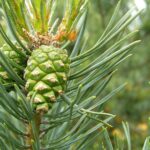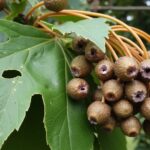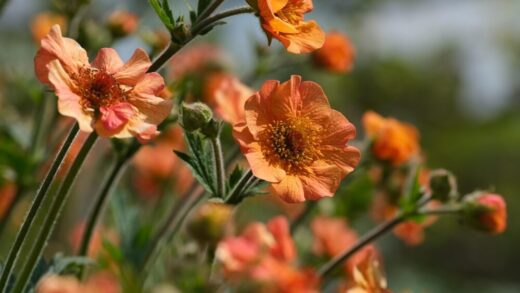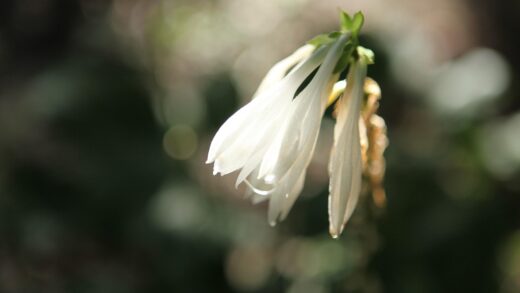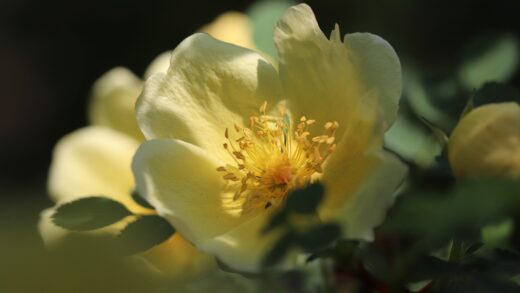Pruning and cutting back orpine are essential maintenance tasks that, while simple, play a significant role in the plant’s health, appearance, and overall performance in the garden. These practices are not about complex shaping but are instead focused on seasonal cleanup, controlling size, and encouraging a sturdy, upright growth habit. Understanding when and how to perform these cuts allows a gardener to manage the plant effectively, ensuring it remains a well-behaved and attractive feature of the landscape year after year.
The primary act of pruning orpine involves the removal of the previous year’s dead stems. This fundamental cleanup is crucial for making way for the new growth that emerges from the crown in the spring. While the timing can be flexible, this task sets the stage for the upcoming season, improving air circulation around the base of the plant and giving the fresh shoots unimpeded access to sunlight. It is the most basic and non-negotiable pruning cut the plant requires.
Beyond this essential cleanup, gardeners can employ a more strategic type of pruning in late spring, often called the ‘Chelsea chop’. This technique is used to manage the height of taller cultivars and to prevent the stems from flopping over later in the season when they are laden with heavy flower heads. It is a proactive measure that sacrifices a small amount of flower size for a significant gain in stem strength and overall plant structure, resulting in a more compact and self-supporting specimen.
The decision of when to perform these tasks—whether to cut back in autumn or spring, or whether to perform a chop—depends on the gardener’s goals and aesthetic preferences. Some may prioritize winter interest and wildlife value, while others may seek the tidiest possible appearance or the most robust plant structure. Fortunately, orpine is a forgiving plant, and as long as the basic principles are followed, it will respond well to these simple yet effective pruning techniques.
The main seasonal cutback
The most important pruning task for orpine is the annual cutback of the old, dead stems from the previous season. This can be done either in the late autumn after a hard frost has killed the top growth, or it can be delayed until late winter or early spring before the new growth emerges. The choice of timing does not affect the health of the plant and is largely a matter of personal preference. Both timings have their own distinct advantages.
Cutting the plant back in the autumn results in a tidy garden bed over the winter. For gardeners who prefer a clean aesthetic, this approach removes all the dead debris before the winter sets in, meaning there is one less job to do in the busy spring season. If you choose this option, wait until the foliage has completely died back and turned brown, then use sharp, clean pruners to cut all the stems down to about one or two inches from the ground.
Alternatively, leaving the stems standing through the winter offers numerous benefits. The dried stems and seed heads provide valuable architectural interest in the dormant landscape, catching frost and snow in a beautiful manner. They also provide a crucial winter food source for seed-eating birds. The standing stems can help trap leaves and snow, which provides natural insulation for the crown of the plant. If this method is chosen, the cleanup is simply postponed until late winter or early spring, cutting the old stems back just as the new reddish buds begin to show at the base.
Regardless of the timing, this annual removal of old growth is essential. It allows sunlight and air to reach the emerging new shoots, promoting healthy and vigorous development. It also helps to prevent any potential disease issues by removing old plant material where pathogens could overwinter. This simple act of housekeeping is fundamental to the long-term care and vitality of the orpine clump.
The ‘Chelsea chop’ technique
For taller cultivars of orpine that are prone to splaying open or flopping, a specific pruning technique known as the ‘Chelsea chop’ can be incredibly effective. This method is named after the famous Chelsea Flower Show in the UK, as it is typically performed in late May or early June, around the same time as the show. The goal of this cut is to encourage a sturdier, more compact plant with more, albeit slightly smaller, flower heads, thereby preventing the late-season flop.
To perform the chop, you simply cut back the stems of the plant by about one-third to one-half of their current height. This should be done when the plant has reached a height of about eight to ten inches. You can do this to the entire clump if you want a uniformly shorter and bushier plant. The plant will respond to this cut by producing multiple side shoots from the leaf nodes below the cut, which will then go on to produce flowers.
A more sophisticated application of this technique involves cutting back only the front half or the outer ring of stems in a clump. The pruned stems will be shorter, sturdier, and will flower a few weeks later than the unpruned stems in the back or center. This creates a tiered effect, where the shorter front stems act as a natural support for the taller stems behind them. It also has the added benefit of extending the overall bloom time of the clump, as the pruned and unpruned sections will flower in succession.
The Chelsea chop is not necessary for all orpine varieties. Shorter, more compact cultivars generally do not require this treatment. It is most useful for the taller types, which can exceed two feet in height and are more susceptible to flopping, especially if they are grown in soil that is slightly too rich or in a location that receives less than the ideal amount of sun. It is a simple, proactive way to ensure a beautiful and self-supporting display.
Pruning to encourage branching
Pruning orpine during its active growing phase is fundamentally about encouraging branching. When the terminal bud (the main growing point at the tip of a stem) is removed, the plant’s hormonal balance is altered. Growth hormones are redirected to the lateral buds located at the leaf axils further down the stem. This stimulation causes these dormant buds to break and grow into new side shoots, resulting in a plant that is much bushier and denser.
The ‘Chelsea chop’ is the primary method for achieving this effect. The single cut on each stem results in the formation of two or more new stems, each of which will develop its own flower head. While these individual flower heads will be smaller than the single one they replaced, the total number of flowers on the plant is significantly increased. This creates a fuller, more floriferous appearance overall.
This technique of pinching or cutting back can also be used in a more targeted way. If you notice a clump of orpine is growing unevenly, with some stems taller than others, you can selectively cut back the taller stems to encourage them to branch and catch up with the shorter ones. This can help to create a more uniform and mounded shape. This type of selective pruning is best done in the late spring.
It is important to understand that this type of pruning must be done at the correct time. Cutting the plant back too late in the season, such as in mid to late summer, will remove the developing flower buds. While the plant may still branch, it will not have enough time to form new buds before the end of the growing season, resulting in a loss of flowers for that year. Therefore, all such formative pruning should be completed by early June at the latest.
Removing spent flowers and tidying up
Unlike many other perennials, there is generally no need to deadhead orpine, which is the practice of removing individual flowers as they fade. The flower heads of orpine age gracefully, often transitioning from their peak color to attractive shades of bronze, copper, and deep brown. These faded flower heads remain structurally sound and continue to provide ornamental interest well into the autumn and winter.
The primary reason for deadheading other plants is to prevent them from setting seed and to encourage a second flush of blooms. Orpine blooms so late in the season that there is no time for it to produce a second set of flowers. Furthermore, allowing the seeds to develop provides food for winter birds, which is an important ecological benefit. Therefore, removing the spent flowers is not only unnecessary but also removes a key feature of the plant’s late-season and winter appeal.
The main tidying task, as previously discussed, is the complete cutback of all stems at the end of the season or in the following spring. This is the only significant “cleanup” the plant requires. Throughout the growing season, orpine is remarkably self-sufficient. Occasionally, a stem may get broken by wind or an errant garden hose. In such cases, the damaged stem should be pruned back cleanly to its point of origin.
These broken pieces do not have to go to waste. Orpine is incredibly easy to propagate from stem cuttings. A broken stem can simply be stripped of its lower leaves and inserted into the soil, where it will often root and grow into a new plant. This resilience and ease of propagation mean that even minor damage can be turned into an opportunity to create more plants for the garden.





